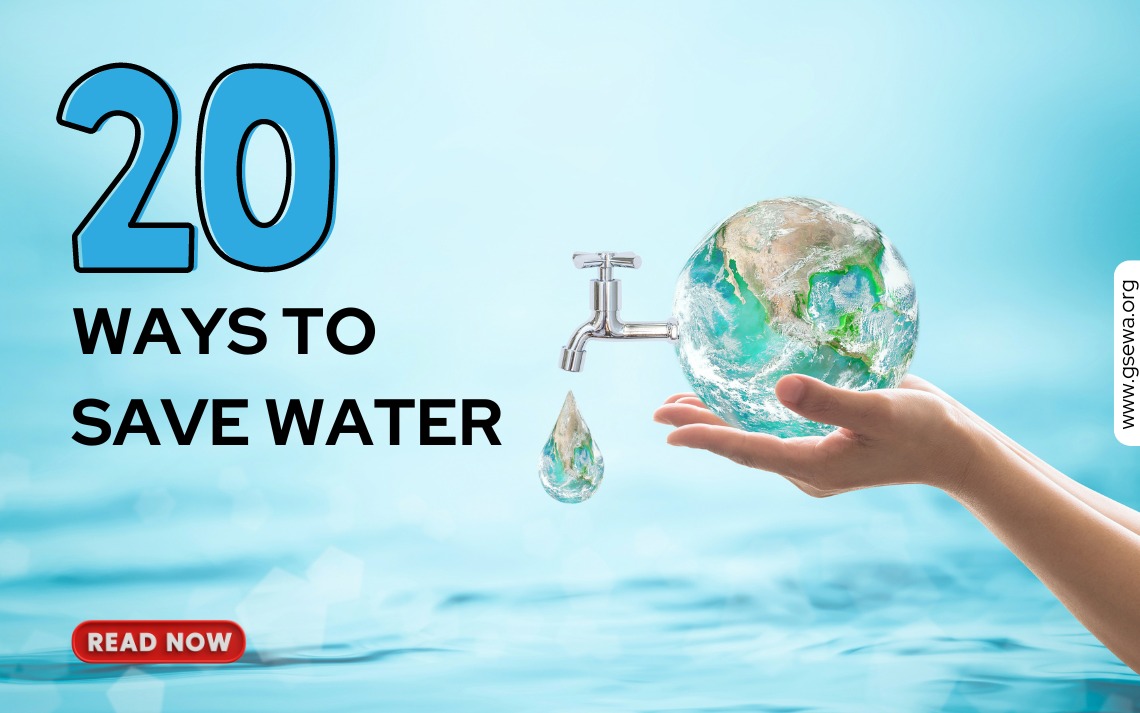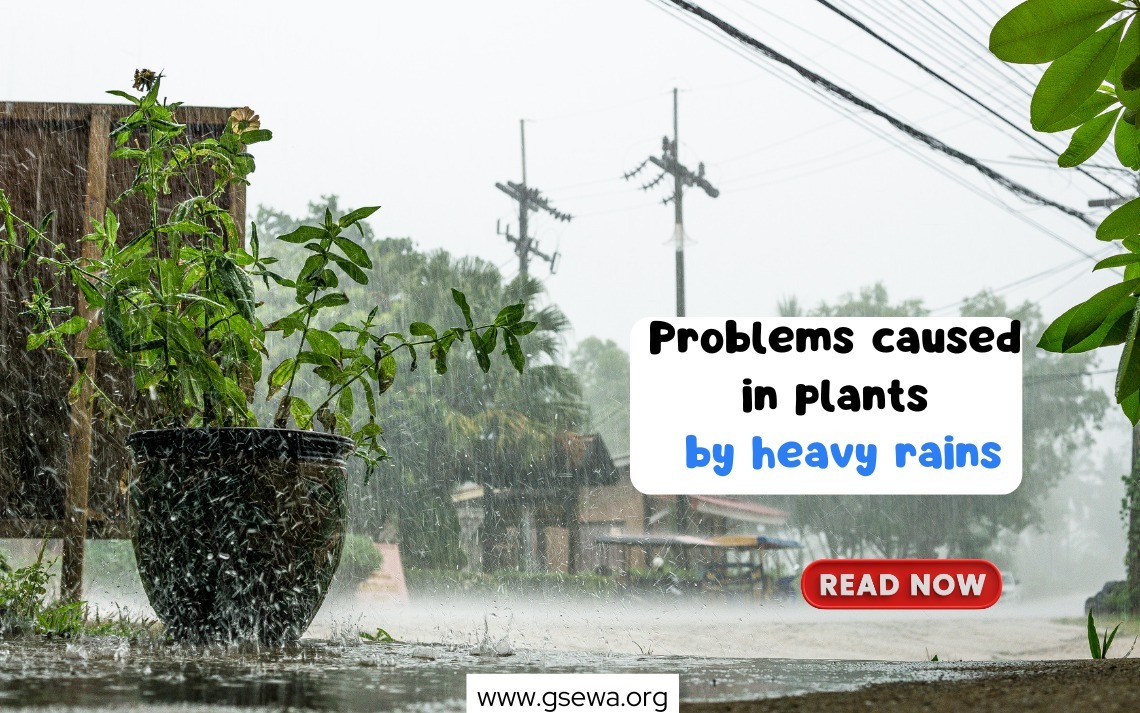Table of Contents:-
- 1. Invest in a faucet aerator
- 2. Be cognizant of your shower time
- 3. Consider a low flush or dual flush for your toilets
- 4. Maintain Faucet discipline
- 5. Fix your leaks
- 6. Plant drought-tolerant plant
- 7. Time your plant watering smartly
- 8. Switch to hand watering
- 9. Water your plants on a need basis
- 10. Wash dishes with consideration
- 11. Educate employees
- 12. Discourage children from wasting water
- 13. Insulate your pipes
- 14. Don’t use the toilet to throw garbage
- 15. Steam instead of boiling
- 16. Consider rainwater harvesting
- 17. Clean open spaces mindfully
- 18. Wash your car efficiently
- 19. Invest in an efficient washing machine
- 20. Do complete loads
- 21. FAQs
A useful guide on how to conserve water in everyday life by taking simple, achievable steps.
It’s important to note that despite 71% of the Earth’s surface being covered with water, only about 3% of that is fresh water, and even less – just 1% – is easily accessible for our use. Despite learning this fact in geography classes, we often act as if fresh water is an infinite resource. This couldn’t be further from the truth. Fresh water is essential for producing everything from our food to the clothes we wear.
India faces significant water scarcity due to its large population and limited access to fresh water resources. Saving water should be a collective responsibility, starting with each individual. Here, we will discuss some simple and effortless ways to conserve water in your daily life.” Read Our This Blog How Much Water Is on Earth 2024?
How can you conserve water in your everyday life?
Remember that every major revolution begins at home. This also applies to water conservation. Homes are where water is used the most. Apart from drinking and cooking, we use water for various daily activities such as bathing, cleaning, and watering plants. Even if your current water supply at home seems plentiful, bear in mind that water scarcity is a harsh reality, as significant as climate change, if not more so.
Next to air, water is the most important element for the preservation of life. Water is a finite commodity which, if not managed properly, will result in shortages in the near future. Water conservation can go a long way to help alleviate these impending shortages.
1. Invest in a faucet aerator
Installing an aerator in your bathroom taps will provide a consistent water flow while reducing overall water usage. This is because an aerator introduces air into the water flow. They are easy to install, inexpensive, and can save almost eighty percent more water than faucets without aerators.
2. Be cognizant of your shower time
Taking a long, warm shower at the end of a tiring day may be tempting, but it is a major cause of water wastage. Opt for a quick shower instead of standing under running water, to save both time and precious water. Even better, consider switching to a traditional bucket and mug bath a few times a week.
3. Consider a low flush or dual flush for your toilets
“Remember, a low flush toilet saves more water compared to a traditional toilet. If you’re on a budget, you can install a dual flush converter in your current toilet. This allows you to select less water for flushing liquid waste and a higher amount for flushing solid waste by pressing the appropriate button.”
4. Maintain Faucet discipline
Letting your faucet run while brushing your teeth, doing your dishes, or even washing vegetables, is something you might be doing without a second thought. Being consistent and disciplined about turning off the faucet while doing daily activities is one of the best ways to save water.
5. Fix your leaks
Remember to check your pipes consistently to detect any leaks. Promptly repair any leaks to prevent water wastage and avoid damage to your expensive fittings and walls.
6. Plant drought-tolerant plant
Balancing your garden with drought-tolerant plants will ensure that your water consumption stays within desirable limits. So, go ahead and plant some bougainvillea, lantana, oleander etc. Enjoy your garden in full bloom, while effectively conserving water, as these plants are less water-demanding.
7. Time your plant watering smartly
Watering plants in the morning is more effective for reducing water wastage. This is because there is less water evaporation in the morning compared to during the daytime when the sun is at its peak. The reduced evaporation means that the plants require less water, as they lose less water to evaporation.
8. Switch to hand watering
Watering with a water hose may be more convenient, especially if you have a large garden. Watering with a hose has been shown to consume huge quantities of water, which could otherwise be saved by hand watering. So, start with small changes, like watering a section of your garden by hand or switching to hand watering every alternate day. Your plants will also thank you for it, as there are lesser chances of fungal disease in plants, which are hand-watered.
9. Water your plants on a need basis
Remember to check your plants before watering them out of habit, especially during the rainy season. Sometimes, you may be overwatering the plants, which can lead to nutrient loss and water wastage. Therefore, it’s important to check the soil before watering as an effective way to conserve water at home.
10. Wash dishes with consideration
When washing dishes by hand, fill up the sink or a large tub with water instead of leaving the tap running. This can be done by training your household helpers too. If you use a dishwasher, make sure it’s fully loaded to avoid running multiple cycles and conserve water.
11. Educate employees
At work, you can educate your fellow employees about the importance of saving water. The office can develop innovative ideas such as a reward system to motivate and encourage employees to conserve water.
In public places, you can also contribute to water conservation by carrying your own water bottle instead of buying water, reporting any leaks you encounter, and using showers at the gym or pool mindfully.
12. Discourage children from wasting water
From a very young age, teach your children the importance of water conservation and how to save water. Let them be aware of how precious resource water is and that they are privileged to have access to clean running water. This will ensure that they are mindful of their water consumption and wastage. Discourage games that involve water, like playing under a hose or sprinkler as it causes tremendous loss of a resource that is fast depleting.
13. Insulate your pipes
If you live in an area with harsh cold weather, it’s a good idea to insulate your pipes. This will help you get hot water more quickly and prevent unnecessary water wastage while waiting for the water to heat up.
14. Don’t use the toilet to throw garbage
Be prudent and use the toilet for its intended use. Refrain from flushing down tissue or other garbage. By disposing of garbage in toilets, not only do you unnecessarily waste water, but you also run the risk of blocking up your pipes leading to clogged drains.
15. Steam instead of boiling
Steaming your vegetables is considered better for preserving nutrients than boiling them in water from a health perspective. This also helps address how to conserve water in daily life, as the water used for boiling vegetables is typically discarded. If you do need to boil your vegetables, make sure to reuse this water for making gravies and soups, or allow it to cool and then use it for watering plants.
16. Consider rainwater harvesting
This is one of the most efficient ways to save water. The water thus collected can be used for a plethora of non-drinking purposes. If you live in a community, it may be a good idea to pool your resources and invest in a rainwater harvesting system. This can have a tremendous impact on your water consumption levels as a community
17. Clean open spaces mindfully
While using a high-pressure hose to wash down patios and driveways is convenient, it leads to a tremendous amount of water wastage. Using a bucket of water with a mug and broom is one of the most effective ways to reduce the large amount of water being wasted.
18. Wash your car efficiently
A full-scale car wash can be quite expensive when it comes to water usage. All you really need for a shiny, sparkling vehicle is a microfiber cloth, cleaning solution, and a bucket of water. Try to limit your car washes to when your vehicle is dirty, or consider using the bucket wash method if you need to clean it frequently. By doing so, you’ll be doing your part to help conserve water in your daily life.
19. Invest in an efficient washing machine
Investing in the latest model of a washing machine will significantly reduce your per-cycle water consumption. In addition to saving energy, you will also have the satisfaction of contributing to water conservation at home.
20. Do complete loads
Ensure that you switch on the washing machine, only if it’s filled to its maximum capacity. Delay washing till you have a full load. This will not only save water but also electricity and your efforts.
Join Hands to Save Water: G-Sewa’s Incredible Impact in Uttar Pradesh
G-Sewa, a leading NGO in water conservation, has been making monumental strides in preserving Uttar Pradesh’s precious water resources. Through innovative projects and community involvement, they are transforming landscapes and lives alike. Discover how you can be part of this inspiring movement.
FAQs
Q1. What are some simple ways to save water in our daily life?
Ans: Some simple ways include fixing leaks, using water-efficient fixtures, taking shorter showers, turning off the tap while brushing teeth, and using a broom instead of a hose to clean driveways.
Q2. How can I reduce water usage in the kitchen?
Ans: You can reduce water usage by washing full loads in the dishwasher, using a basin to wash fruits and vegetables, and reusing cooking water for plants.
Q3. What are some water-saving tips for the bathroom?
Ans: Install low-flow showerheads and faucets, take shorter showers, and use a dual-flush toilet to save water.
Q4. How can I save water in the garden?
Ans: Water plants early in the morning or late in the evening, use mulch to retain moisture, and choose drought-resistant plants.
Q5. What is G-SEWA?
Ans: G-SEWA is a non-governmental organization focused on water conservation and promoting sustainable water management practices in Uttar Pradesh, India.
Q6. How can I join G-SEWA?
Ans: You can join G-SEWA by visiting their website, filling out a membership form, and participating in their events and activities.
Q7. What activities does G-SEWA organize?
Ans: G-SEWA organizes awareness campaigns, community clean-ups, tree planting drives, and workshops on water conservation.




